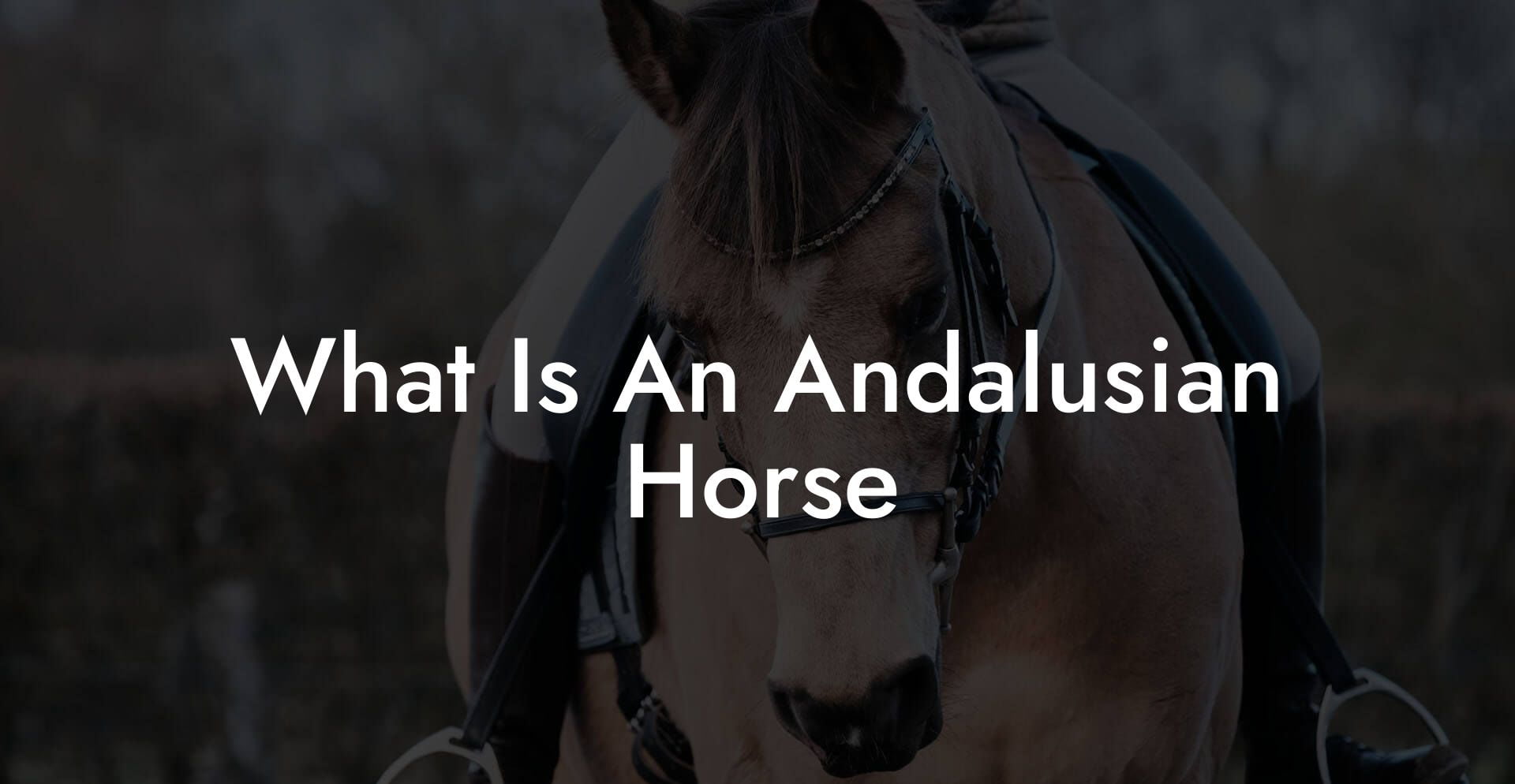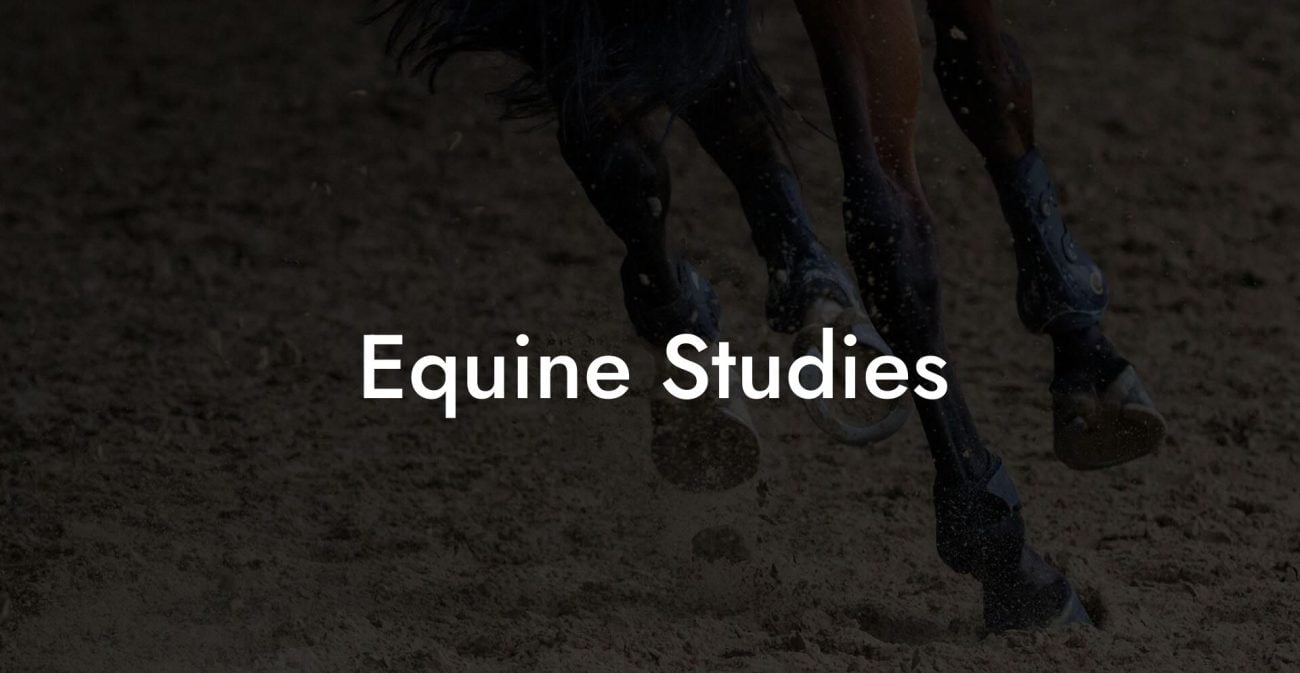Ever wondered what makes the Andalusian horse not just a majestic steed, but a veritable icon of equine brilliance? Picture yourself riding a sleek, powerful, and stunningly elegant horse that embodies centuries of history, tradition, and a hint of rebellious spirit, welcome to the world of the Andalusian horse! This article is your all-access pass into the fascinating universe of these noble animals. Whether you’re a seasoned equestrian, a curious Gen-Z enthusiast, or a millennial with dreams of riding off into the sunset, get ready to learn everything about caring for an Andalusian horse, their temperament, grooming tips, and why they're not just any breed, they’re a lifestyle.
Quick Links to Useful Sections
- The Andalusian Horse: A Glimpse Into History and Heritage
- Defining Characteristics and Temperament
- Caring for Your Andalusian Horse: The Essentials
- nutrition and Feeding
- Grooming and Maintenance
- Exercise and Training
- Regular Veterinary and Farrier Visits
- Understanding Andalusian Behavior and Building Trust
- Andalusian Horse Performance: From Barricades to Ballrooms
- The Role of Environment in an Andalusian’s Well-Being
- Advanced Care: Handling Special Needs and Aging Andalusians
- Innovative Training Techniques: Blending Tradition with Technology
- Community, Resources, and Support: Your Next Steps
- Online Resources
- Local Clubs and Events
- Professional Advice
- Unlocking the Andalusian Spirit: Riding, Bonding, and Life Lessons
- FAQs on Andalusian Horses: Everything You Need to Know
- Embracing the Andalusian Lifestyle: Tips for an Epic Journey
The Andalusian Horse: A Glimpse Into History and Heritage
The Andalusian horse, also known as the "Pura Raza Española" or Spanish Riding Horse, has enchanted audiences around the globe for centuries. Originating in the Iberian Peninsula, these horses have been admired by ancient warriors, royal courts, and modern-day celebrities alike. Their history is as dramatic as their presence, marked by legendary battles, royal parades, and even the romance of flamenco dancers. The Andalusian isn’t just a horse, it’s a living, breathing embodiment of centuries-old traditions and culture.
With their thick, lustrous manes and expressive eyes, these horses have been historically associated with nobility, power, and artistry. Initially bred for their agility and strength for war and ceremonial purposes, they have gradually evolved into symbols of elegance and performance in classical dressage. Their ability to perform intricate movements with calculated precision makes them a favorite in the equestrian world.
So, what exactly defines an Andalusian horse? Dive in as we explore their physical characteristics, temperament, and why they remain a much-coveted breed for both competitive riders and leisure enthusiasts.
Defining Characteristics and Temperament
Andalusian horses boast a regal presence with a compact yet muscular build, a deep chest, and a powerful, arched neck that conveys grace and strength. Their conformation epitomizes both beauty and functionality: a blend of classical features and modern performance. With expressive eyes and a proud bearing, these horses capture attention whether they're in the arena or grazing in a sun-dappled pasture.
When it comes to temperament, Andalusians are as multifaceted as they are charming. Typically known for their intelligence, sensitivity, and gentle nature, they form strong bonds with their human companions. However, don’t be fooled by their approachable demeanor, these horses are also spirited and confident, capable of performing complex maneuvers with poise and precision.
Their versatility, coupled with their centuries-old heritage, makes them perfect for classical dressage and driving events, while their inquisitive nature makes them a delight in more casual riding settings. Whether you’re training for advanced dressage competitions or simply enjoying an afternoon trail ride, the Andalusian’s adaptability and personality ensure that every ride is an experience steeped in connection and tradition.
Caring for Your Andalusian Horse: The Essentials
Owning an Andalusian horse is like having a living piece of art in your stable, a companion that melds beauty with intellect. But with such pride comes responsibility, and learning how to properly care for these magnificent creatures is essential. Here’s a comprehensive guide to maintaining their health, happiness, and that signature flair.
nutrition and Feeding
Nutrition plays a pivotal role in ensuring your Andalusian stays in peak condition. These horses require a balanced diet rich in quality hay, grains, and fresh pasture. Always ensure your horse has access to clean, fresh water, hydration is a fundamental part of overall health.
Incorporate a mix of concentrates and forage that meet their specific dietary needs. Andalusians, with their muscle-rich build and active lifestyles, benefit from a diet that’s as dynamic as they are. Consider consulting an equine nutritionist to tailor a diet plan that supports muscle recovery, energy levels, and overall vitality.
Grooming and Maintenance
The Andalusian’s stunning appearance is further enhanced by regular, meticulous grooming. Not only does grooming ensure a shiny, healthy coat, but it also allows you to monitor their skin for injuries or irritations. Use a curry comb, hard brush, and soft brush in succession to remove dirt, detangle the mane, and stimulate circulation.
Regular grooming sessions are also the perfect time to bond with your horse, talk, sing, or even share a laugh as you work together to keep them looking flawless. Remember, a well-groomed horse is not only a happy horse but also a healthier one.
Exercise and Training
Exercise is essential for maintaining the Andalusian’s physical conditioning and mental alertness. Whether you’re into competitive dressage or leisurely trail rides, creating a consistent, varied exercise routine will keep your horse engaged and in form. Begin with basic groundwork to build mutual trust, then gradually introduce more advanced techniques.
These intelligent creatures thrive on routine and positive reinforcement. Incorporate activities that challenge both their minds and bodies, such as obstacle courses, mountain riding, and even some playful games in the paddock. A mix of traditional training methods with modern techniques, like positive reinforcement, often yields the best results.
Regular Veterinary and Farrier Visits
Health is a top priority when caring for any horse, and Andalusians are no exception. Ensure that your horse receives regular veterinary check-ups and any recommended vaccinations. Keeping an updated health record is crucial to catch any issues early on.
Equally important is routine farrier care. Regular hoof trimming and shoeing (if needed) maintain balance and prevent lameness. Track their hoof growth and be attentive to any changes in gait, as Andalusians, with their athletic build, can develop hoof issues if not properly maintained.
By investing in their health and providing quality care, you’re not just maintaining a horse, you’re nurturing a legacy of grace and power.
Understanding Andalusian Behavior and Building Trust
Andalusians are renowned not just for their beauty but also for their deep emotional connection with people. These horses are eager learners, and building trust with them is key to unlocking their full potential. They appreciate clear communication and gentle guidance, making them ideal for riders who are just learning as well as for advanced riders seeking a partner in performance.
Spending quality time with your horse, beyond just training sessions, helps develop a strong bond. Whether it’s brushing sessions, cool-down walks after training, or even sharing a quiet moment at sunrise, every bit of attention contributes to a healthier relationship built on mutual respect. This bond not only enhances performance but also improves your horse’s overall well-being.
Remember, the journey of training and understanding an Andalusian is as enriching as mastering dressage movements. Their sensitive and intuitive nature means they can sense the slightest change in your tone or emotion, so keep it cool, calm, and collected, and don’t forget to throw in a little humor now and then!
Andalusian Horse Performance: From Barricades to Ballrooms
What sets the Andalusian apart in the equestrian world is its prowess in performance disciplines like dressage, show jumping, and even driving competitions. Their ability to perform intricate movements with pinpoint precision, combined with an innate sense of rhythm and balance, has made them a favorite when it comes to classical riding and even contemporary equestrian performances.
Imagine a performance where the horse moves with such fluid elegance that it appears to be dancing, a true fusion of athleticism and artistry. That’s the Andalusian for you: a breed that effortlessly moves between the elegance of a ballroom dance and the raw power of a steed in battle. For riders aiming to showcase this versatility, investing time in classical dressage training can enhance their performance, enabling a graceful synthesis of tradition and modern technique.
Training sessions should be fun and challenging. Mix in some creative routines, spontaneous freestyle rides, and even some light-hearted competitions with fellow equestrians to keep the spirit alive. The Andalusian responds best to a well-rounded routine that is both mentally stimulating and physically demanding.
The Role of Environment in an Andalusian’s Well-Being
The environment in which your Andalusian lives plays a huge role in its overall health and behavior. These horses thrive in settings that offer a mix of open pastures for grazing and structured arenas for training. An ideal stable isn’t just about shelter, it’s a dynamic ecosystem that nurtures natural behaviors and overall well-being.
Consider investing in a spacious paddock where your horse can socialize with other equines, explore its surroundings, and simply be in the moment. Natural light, fresh air, and varied terrain all contribute to a more stimulating and healthier environment. Whether you live in the countryside or manage a city stable, creating an enriching habitat for your Andalusian will pay dividends in terms of behavior, mood, and performance.
Additionally, incorporating thoughtful stall design, regular pasture rotation, and ample shade can help control conditions like heat and dampness, ensuring that every aspect of the horse’s living conditions contributes to a state of overall contentment and physical health.
Advanced Care: Handling Special Needs and Aging Andalusians
As with all living beings, there comes a time when your Andalusian will require extra care. Whether it’s dealing with minor injuries, addressing age-related issues, or simply enhancing its quality of life during its golden years, advanced care strategies are essential.
Regular health assessments become even more critical as your Andalusian ages. Look for signs of stiffness, changes in appetite, or alterations in behavior that could indicate underlying issues. Tailor exercise routines to focus on maintaining flexibility and joint health, low-impact exercises like controlled walking, swimming, and specialized physical therapy can be invaluable.
Incorporate joint supplements, antioxidants, and a tailored diet to support aging tissues. Consult with your veterinarian for any additional treatments that might help mitigate the rigors of aging, such as acupuncture or hydrotherapy sessions. An aging Andalusian can still shine on the arena with the right care, think of it as evolving from a youthful prodigy to a wise, seasoned performer.
It’s a journey that reminds us that every stage of life deserves respect and thoughtful attention. By adapting your care strategies appropriately, you ensure that your horse continues to embody that timeless spirit of strength, elegance, and resilience.
Innovative Training Techniques: Blending Tradition with Technology
The world of equestrian training is constantly evolving, and even a breed as storied as the Andalusian benefits from modern innovations. Thanks to advancements in technology, training techniques now incorporate tools like wearable fitness trackers for horses, mobile apps to monitor progress, and even video analysis to fine-tune performance during dressage routines.
By blending traditional training methods with modern tech, riders can gain valuable insights into their horse’s performance. For instance, video playback can help identify subtle flaws in posture or movement, while wearable devices offer real-time data on heart rate, stride length, and overall exertion. This marriage of old-world charm and cutting-edge technology not only enhances training but also creates a more engaging and data-driven approach to equine care.
Embrace these modern tools as a way to complement, not replace, the classic elements of training. The goal is to boost communication and understanding between you and your Andalusian, making every ride a symphony of tradition and innovation.
Community, Resources, and Support: Your Next Steps
One of the best parts about owning an Andalusian horse is joining a vibrant, global community of passionate equestrians. Whether you’re seeking advice on advanced care techniques, looking for local riding clubs, or simply wanting to connect with like-minded enthusiasts, there’s an abundance of resources at your fingertips.
Begin by tapping into specialized online forums, social media groups, and local equestrian clubs focused on Andalusian horses. Many professionals and fellow horse lovers are eager to share their knowledge on everything from grooming hacks to expert training tips. These communities can be a goldmine of firsthand experiences and creative solutions that will elevate your care routine.
Online Resources
The internet is brimming with high-quality content, blogs, video tutorials, and webinars all geared toward Andalusian care. Look for websites and forums that specialize in breed-specific advice. Search for terms like “Andalusian horse grooming,” “Andalusian dressage tips,” and “caring for an Andalusian horse” for tailored insights.
Local Clubs and Events
Consider joining a local equestrian club or mastermind group that focuses on Andalusian horses. Attending demonstrations, local competitions, and breed-specific events not only sharpens your riding skills but also strengthens your network. The shared passion for this majestic breed often leads to lasting friendships and invaluable support, perfect for those moments when you need that extra nudge in your training journey.
Professional Advice
Never underestimate the value of expert guidance. Building relationships with local veterinarians, equine nutritionists, and professional trainers can provide tailor-made advice for your horse. Their expertise can help you navigate specific challenges, from managing an injury to optimizing performance for competitive events.
Whether you’re just starting out as a horse owner or you’re a seasoned pro looking to refine your skills, these resources and communities can be the key to unlocking the full potential of your Andalusian horse.
And remember, caring for an Andalusian is not merely about routines and checklists, it’s a journey of passion, creativity, and a deep connection with one of nature’s most captivating creatures.
Unlocking the Andalusian Spirit: Riding, Bonding, and Life Lessons
There’s an undeniable magic in the bond between a rider and their Andalusian horse. Each ride is an opportunity to connect deeply with a creature that has been celebrated for its beauty and intellect across millennia. This isn’t just about skilled riding, it's about letting go, trusting in your partner, and feeling the combined power of history and passion merge into one unforgettable experience.
Picture a crisp morning ride through sprawling fields, the Andalusian’s mane flowing in the breeze as you navigate through nature, each stride whispering secrets of ancient times. That feeling of unity, freedom, and exhilaration is what every rider dreams of, and what you’ll experience when you fully immerse yourself in the Andalusian lifestyle.
Embracing the Andalusian way of life means learning valuable lessons about patience, trust, and the art of balance. It’s about being present in the moment and appreciating the little victories, like nailing that perfect canter or mastering a challenging maneuver in dressage. With humor, resilience, and a dose of creativity, every ride becomes more than just a journey, it evolves into a transformative experience.
FAQs on Andalusian Horses: Everything You Need to Know
Here is a collection of frequently asked questions that dig into the nitty-gritty of Andalusian horses, their care, and their unique characteristics:
1. What defines an Andalusian horse?
The Andalusian horse is a breed with a storied history from the Iberian Peninsula. Known for its strength, elegance, and a distinctive arched neck, this breed shines in classical dressage and other performance disciplines.
2. How do I maintain the coat and mane of an Andalusian?
Regular grooming, including brushing, detangling, and occasional bathing, is essential. Using quality grooming products will help maintain a shiny coat and luscious mane, which are key features of the breed.
3. What should I feed my Andalusian horse?
A balanced diet of high-quality hay, grains, and access to pasture, along with fresh water, is ideal. Consult an equine nutritionist to fine-tune your horse's diet based on its activity level and health needs.
4. How often should I exercise my Andalusian?
Regular, varied physical activity is important. Depending on your horse’s health and training regime, daily exercise with gradual builds of intensity, from groundwork to advanced dressage routines, will keep your Andalusian in top shape.
5. Are Andalusians good for riders of all levels?
Yes, their adaptable and sensitive nature makes them suitable for both beginners and experienced riders. They thrive on positive reinforcement, making the learning process both enjoyable and rewarding.
6. What special considerations are there for aging Andalusians?
With age, Andalusians may require adjusted exercise routines, joint support supplements, and more frequent veterinary check-ups. Tailoring their care to suit aging joints and changing nutritional needs is key.
7. Can technology help in training Andalusian horses?
Absolutely. Tools like wearable trackers, video analysis, and performance monitoring apps can provide valuable data to improve training routines and better understand your horse’s progress.
8. Where can I connect with other Andalusian enthusiasts?
Online forums, social media groups, local equestrian clubs, and breed-specific events are great places to start. These communities offer insights, support, and opportunities to share experiences with fellow aficionados.
Embracing the Andalusian Lifestyle: Tips for an Epic Journey
As we wrap up our immersive dive into the world of Andalusian horses, remember that owning and caring for one is about more than just meeting physical needs. It’s a lifestyle choice that blends history, artistry, and a dash of modern innovation to create unforgettable moments of connection and adventure.
Every gallop, every quiet grooming session, and every shared smile reinforces the bond between you and your horse. Whether you’re perfecting a dressage maneuver, enjoying a lazy sunset ride, or swapping tips on the best grooming techniques with friends online, you’re truly living the Andalusian dream.
The Andalusian isn’t just a horse, it’s a canvas for your passion, a partner in creativity, and a living symbol of centuries of equine excellence. Embrace their spirited nature, invest in their well-being, and let the journey of care, training, and adventure lead you to realms of personal growth and endless joy.
So saddle up and dive into this epic equestrian adventure. With every ride, you’re not only nurturing a magnificent creature but also strengthening a legacy of elegance, power, and passion that has transcended generations.













